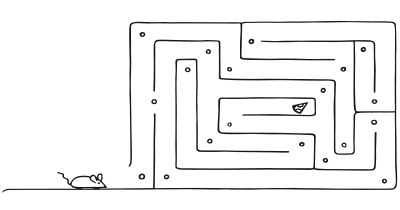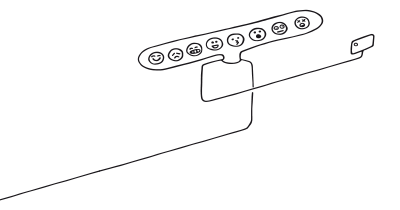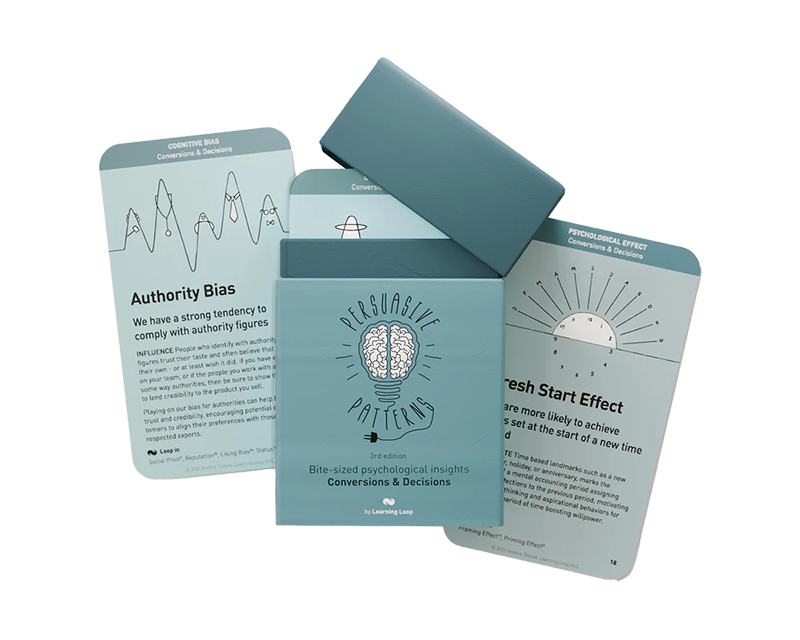
Reciprocity refers to the innate human inclination to respond to a positive action with another positive action, meaning people feel compelled to repay or reciprocate when something is given to them or a kind gesture is shown.
Imagine dining at a pleasant restaurant. As you finish your meal and ask for the check, the waiter brings it to your table along with a small complimentary mint for each guest. As a result, you might feel a subtle inclination to leave a slightly larger tip, say by an additional 3%. Now, imagine a slightly different scenario at the same restaurant. This time, after providing a mint for each diner, the waiter begins to walk away, then pauses, turns back with a warm smile, and says, “For you nice folks, here’s an extra mint.” Surprisingly, this small act of perceived personal generosity results in an even more significant increase in the tip you leave, as much as 23%. It’s not merely about the mints given but the manner in which they are presented. This gesture amplifies the feeling of personal attention and the principle of reciprocity, compelling patrons to reciprocate the kind act in the form of a heftier tip.
Consider an online store specializing in artisan coffee beans. After browsing for a while, you decide to purchase a bag of their highly recommended blend. As you proceed to checkout, a message appears: “Thank you for your purchase! To help you get the best from your selected blend, we have added a complimentary PDF on brewing techniques tailored for it.” After your order is confirmed, you not only receive your purchase details but also a beautifully designed PDF in your inbox that isn’t just generic; it provides specific tips and tricks to optimize the flavor of the exact coffee blend you purchased. This thoughtful and personalized gesture makes you feel that the company genuinely cares about enhancing your coffee experience. Such acts, rooted in the principle of reciprocity, not only make you more likely to return for future purchases but also to recommend the store to friends and family.
The mints study
In one of the foundational studies on reciprocity, researchers explored the power of giving small gifts to diners in a restaurant setting. They found that when servers provided patrons with a single mint at the end of their meal, tips increased by 3%. However, when two mints were provided, the tips astonishingly quadrupled, showing a 14% increase. The most dramatic result was observed when servers gave one mint, began to walk away, paused, turned back, and said, “For you nice people, here’s an extra mint.” Tips surged by 23%. It wasn’t the mint that influenced the patrons but the manner in which the gesture was made.
Regan, D. T. (1971). Effects of a favor and liking on compliance. Journal of Experimental Social Psychology, 7(6), 627-639.
At its core, the principle of reciprocity is rooted in the social norms and conventions that govern human interactions. It’s more than just a simple give-and-take; it’s a deep-seated urge to balance the scales, to ensure that kindness is returned. This pattern has been leveraged for centuries in various cultures to build relationships, trust, and social cohesion. In the context of modern products and services, businesses utilize reciprocity to foster loyalty, encourage engagement, and drive certain user behaviors. For instance, offering a free trial, sample, or valuable content can prompt users to reciprocate by making a purchase, providing feedback, or promoting the brand.
The soda and raffle tickets study
In an experiment, participants were placed together with a confederate (a person who was in on the experiment but acted as a regular participant). Initially, the confederate would do a favor for the participant, like buying them a soda. Later, when the confederate requested the participant to purchase raffle tickets, the researchers observed that the participants bought significantly more tickets than those who had not received a favor. This behavior showcased a powerful human tendency: when someone does something for us, we naturally want to return the favor, sometimes even going beyond the original act. This act of reciprocating, even when not in our best interest, is deeply rooted in our social behaviors.
Regan, D. T. (1971). Effects of a favor and liking on compliance. Journal of Experimental Social Psychology, 7(6), 627-639.
The principle of reciprocity has ancient roots, being integral to societal cooperation and maintaining harmony in communities. It was, and still is, a cornerstone of social norms and customs across various cultures. Whether it’s in tribal gift exchanges or modern-day gift-giving during holidays, the idea is to establish or reinforce social bonds and mutual obligations.
Designing products with Reciprocity
Incorporating the principle of reciprocity into product design is a potent tool to guide user behavior. At its core, this principle relies on the fundamental human instinct to return a favor. To effectively apply this, begin by determining a genuine value you can extend to your users. This value could manifest as beneficial features, useful content, or even trial services. Consider a software application offering a complimentary tutorial on a pertinent topic. Such gestures not only equip users with knowledge but also foster a sense of appreciation for the product, enhancing the likelihood of further engagement.
The presentation of this value is as crucial as the value itself. It’s vital to communicate this value upfront, signifying to users that they are receiving something without an immediate ask in return. A practical approach might be granting users access to select premium features before nudging them to sign up or subscribe. Such goodwill gestures often tilt users towards reciprocation, be it in the form of a purchase, deeper engagement, or even brand advocacy.
However, there are pitfalls to be wary of. Offering excessive value might lead to skepticism, with users potentially feeling there’s a hidden catch. Authenticity is paramount; a perceived lack of it or any semblance of a bait-and-switch tactic can diminish trust. Moreover, while the desired user action should be implicit, it shouldn’t be so subtle that users remain uncertain of the next steps. An overt focus on extracting a reciprocal action can also deter users, making the relationship feel transactional.
A notable observation from studies is the phenomenon termed Reciprocity Decay. Contrary to popular belief, our inclination to reciprocate doesn’t endure indefinitely. Research indicates a rapid waning of this desire over time, emphasizing the importance of timing in eliciting reciprocal actions. It’s key to find the optimal window - not immediate to the point of discomfort, yet not so delayed that the initial gesture fades from memory.
Ethical considerations are integral to this entire process. It’s essential to approach reciprocity with genuine intent, free from manipulation or deceit. Being transparent about conditions and avoiding over-commitments fosters trust. Prioritizing user welfare, ensuring genuineness, and maintaining transparency in every action are non-negotiables.
In summary, when wielded with genuine intent and ethical considerations, reciprocity can significantly enhance user engagement and loyalty in product design.
Ethical recommendations
The persuasive power of reciprocity offers enticing possibilities. Yet, as with all tools of influence, it holds the potential for misuse. Understanding the ethical ramifications of this pattern is essential to ensure a harmonious relationship between users and products.
One of the primary ways reciprocity can be misused is through manipulative gifting. This involves presenting users with a “free” offering, creating an expectation of a return favor, often without making this expectation clear upfront. Such practices can be deceptive, leading users to feel coerced into making decisions they wouldn’t have made otherwise. Moreover, continually offering perceived gifts can create an imbalance, making users feel obligated to reciprocate beyond their comfort levels. This sense of obligation, when misused, can lead to potential user exploitation. Hidden conditions tied to offerings can further erode trust, where users, feeling fooled, pull back from what was initially presented as a free, goodwill gesture.
However, the principle of reciprocity can be ethically applied by focusing on transparency and genuine value. What is most important is to be clear about any expectations associated with offerings, allowing users to make informed decisions. Any conditions linked to an offering should be stated upfront, eliminating any potential for surprise or feelings of deception. By ensuring that what’s being offered holds genuine value for the user, designers can create an environment of trust and mutual respect. This environment should be one where users feel free to accept or decline an offer without pressure or guilt.
Real life Reciprocity examples
Dropbox
By receiving more space, existing users were motivated to promote Dropbox, while new users got introduced to the platform’s benefits and also received extra storage. A massive increase in user signups without traditional advertising followed.
HubSpot
Offering a variety of free tools, HubSpot not only provides value to users but also introduces them to the brand’s ecosystem. Users who benefit from the free tools are more likely to consider HubSpot’s premium offerings.
Airbnb
Incentivizing their users to invite their friends to the platform by offering travel credits, the original referrer gets credit they can use for their future travels. This reciprocal strategy helps Airbnb acquire new users and rewards existing ones.
Trigger Questions
- What genuine value can I offer users that they'd genuinely appreciate or benefit from?
- How can I present the offered value in a manner that amplifies the feeling of goodwill and personal attention?
- How can I ensure that my reciprocity gestures don't create overwhelming obligations or unmet expectations for the user?
- How can I clearly communicate any conditions or expectations tied to my offered value, ensuring users never feel deceived?
- Given the Reciprocity Decay phenomenon, when is the optimal time to present the offering to elicit a reciprocal action?
- How can I ensure the principle of reciprocity is applied with genuine intent, prioritizing user welfare, and avoiding any manipulative undertones?
Pairings
Reciprocity + Curiosity Effect + Peak-End Rule
Celebrating milestones can be an excellent way to appreciate users. For instance, a platform can offer exclusive content or features (reciprocity) to its early adopters. This “hidden” content, often referred to as “easter eggs,” piques user curiosity (Curiosity Effect), and by ensuring this content is delightful, the user’s interaction ends on a high note (Peak-End Rule).

We feel obliged to give when we receive

We crave more when teased with a small bit of interesting information

We judge an experience by its peak and how it ends
Reciprocity + Self-Expression
Personalizing the act of giving can enhance the perceived value of the offering. A digital gift card platform might allow users to customize their gift cards with personal messages or images. By doing this, the platform offers a gift (reciprocity) that also allows for personal expression, deepening the connection between the giver and the receiver.

We feel obliged to give when we receive

We seek opportunities to express our personality, feelings, or ideas
Reciprocity + Nostalgia Effect
Positive memories, especially those shared with others, have a strong emotional pull. A photo-sharing app might remind users of past shared memories, encouraging them to revisit and share old moments (Nostalgia Effect). By offering this trip down memory lane as a feature, the app provides value (reciprocity) and fosters a deeper connection with its users.

We feel obliged to give when we receive

Reminiscing about the past makes us downplay costs
Reciprocity + Peak-End Rule
Ensuring users end their interaction with a product on a positive note can foster brand loyalty. A streaming service, for instance, might offer an exclusive behind-the-scenes clip after a movie ends. This bonus content serves as a gift (reciprocity) and ensures the viewer’s experience concludes with a memorable moment (Peak-End Rule).�a�aConsider the entire user experience when pairing patterns. While combining patterns can be effective, it should never come at the cost of user satisfaction or comfort.

We feel obliged to give when we receive

We judge an experience by its peak and how it ends
A brainstorming tool packed with tactics from psychology that will help you increase conversions and drive decisions. presented in a manner easily referenced and used as a brainstorming tool.
Get your deck!- Effects of a favor and liking on compliance by Regan
- Field study of charitable giving [ by Chuan, Kessler & Milkman
- Reciprocity (social psychology) at Wikipedia (en)
- Reciprocity Decay
- Goldstein, N. J., Cialdini, R. B., & Griskevicius, V. (2008). A room with a viewpoint: Using social norms to motivate environmental conservation in hotels. Journal of Consumer Research, 35(3), 472-482.
- Regan, D. T. (1971). Effects of a favor and liking on compliance. Journal of Experimental Social Psychology, 7(6), 627-639.
- Cialdini, R. B., Vincent, J. E., Lewis, S. K., Catalan, J., Wheeler, D., & Darby, B. L. (1975). Reciprocal concessions procedure for inducing compliance: The door-in-the-face technique. Journal of Personality and Social Psychology, 31(2), 206-215.
- Gouldner, A. W. (1960). The norm of reciprocity: A preliminary statement. American Sociological Review, 25(2), 161-178.
- Thaler, R. H. (1985). Mental accounting and consumer choice. Marketing Science, 4(3), 199-214. Thaler introduces the concept of 'mental accounting', where individuals value received gifts or freebies, impacting subsequent choices.
